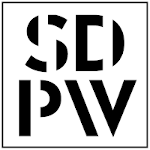| # |
Obszar badawczy |
Dziedzina naukowa |
|
1
|
c++, fizyka jądrowa, fizyka jądrowa i cząstek elementarnych, fizyka wysokich energii, brookhaven national laboratory, gwiazda, fizyka jądrowa wysokich energii, fizyka wysokich energii, fizyka ogólna, rhic, korelacje, eksperyment gwiezdny, niepewności, przekrój, symulacja, kwarki, kwarki b, tło, ogólna nauka i technika, plazma, plazma kwarkowo-gluonowa, symulacja zderzeń ciężkich jonów, monte carlo, wydajność, kwarki ciężkie, symulacje fizyki jądrowej, przepływ eliptyczny
|
|
|
2
|
Design of logistic facilities (warehouses, logistic and distribution centres, transshipment terminals, intermodal terminals, industrial plants, etc.); shaping, optimization, rationalization, streamlining, modelling of logistic processes, internal transport and storage processes; implementation and evaluation of new technologies in intralogistics and logistics; modelling and optimization of intralogistic processes (order picking, co-packing, packing, storage, transshipment, etc.), application of mathematical and simulation modelling tools; application of mathematical and simulation modelling tools in logistics; construction of simulation models and conducting simulation studies (e.g. using the FlexSim tool); digital twin; digital shadow; IoT - Internet of Things
|
|
|
3
|
Designing, modeling, and optimizing logistics systems emphasize warehouse infrastructure, cross-docking, transshipment, and industrial facilities. Storage and internal transport technology, automatic material handling systems, and order-picking systems. Optimization of logistics and transportation processes, including material and information flow processes. Advanced FlexSim simulation of logistics systems, including internal transport systems, warehouse, and production infrastructure. Information systems in supply chains, Industry 4.0 in logistics, digital twin, digital shadow, Warehouse Management System, Warehouse Control System, green warehousing, ecological and sustainable transport. Urban logistics.
|
|
|
4
|
Research in the area of supply chain management (SC): flexibility and resilience of SC to internal phenomena and global disruption (natural disasters, wars, diseases, sanctions), management and shaping of SC, supply, distribution, risk management, development and/or the use of decision support tools in SC based on the machine learning, artificial intelligence, simulation.
Research in the field of city logistics: planning a cargo distribution system, developing innovative solutions for the last mile logistics, infrastructure designing for environmentally-friendly vehicles, including methods of locating charging stations for electric vehicles, developing and/or using decision support tools in urban logistics based on the machine learning, artificial intelligence, simulation.
|
|
|
5
|
Lighting of means of transport and transport infrastructure. Modeling and simulation of optical-lighting systems. Design of innovative lighting systems of the public transport infrastructure. Energy efficiency of lighting. Light pollution. Impact of lighting on humans. Studies of the state of the means of transport lighting and lighting infrastructure. Issues of lighting in Smart City.
|
|
|
6
|
Analysis, synthesis, design, and optimization of complex dynamical systems, particularly in robotics, machinery, and multibody mechanisms applications. Computational methods for motion planning and control and experimental verification of these methods.
1. Research on kinematics and dynamics of redundant manipulators as well as overactuated and underactuated dynamical systems. Optimal trajectory planning for robots and manipulators, especially in time-varying environments under the real-time requirement. Model-based control methods. Direct human-robot physical interactions.
2. Development, implementation, and experimental verification of computationally effective methods for modeling rigid or flexible multibody systems with redundant constraints. Research on systems with friction in joints—development of friction models embedded in the algorithms for multibody systems computations. Applications of computer simulation methods in the design and optimization of machines and mechanisms.
|
|
|
7
|
Analysis, synthesis, design, and optimization of complex dynamical systems, particularly in robotics, machinery, and multibody mechanisms applications. Computational methods for motion planning and control and experimental verification of these methods.
1. Research on kinematics and dynamics of redundant manipulators as well as overactuated and underactuated dynamical systems. Optimal trajectory planning for robots and manipulators, especially in time-varying environments under the real-time requirement. Model-based control methods. Direct human-robot physical interactions.
2. Development, implementation, and experimental verification of computationally effective methods for modeling rigid or flexible multibody systems with redundant constraints. Research on systems with friction in joints—development of friction models embedded in the algorithms for multibody systems computations. Applications of computer simulation methods in the design and optimization of machines and mechanisms.
|
|
